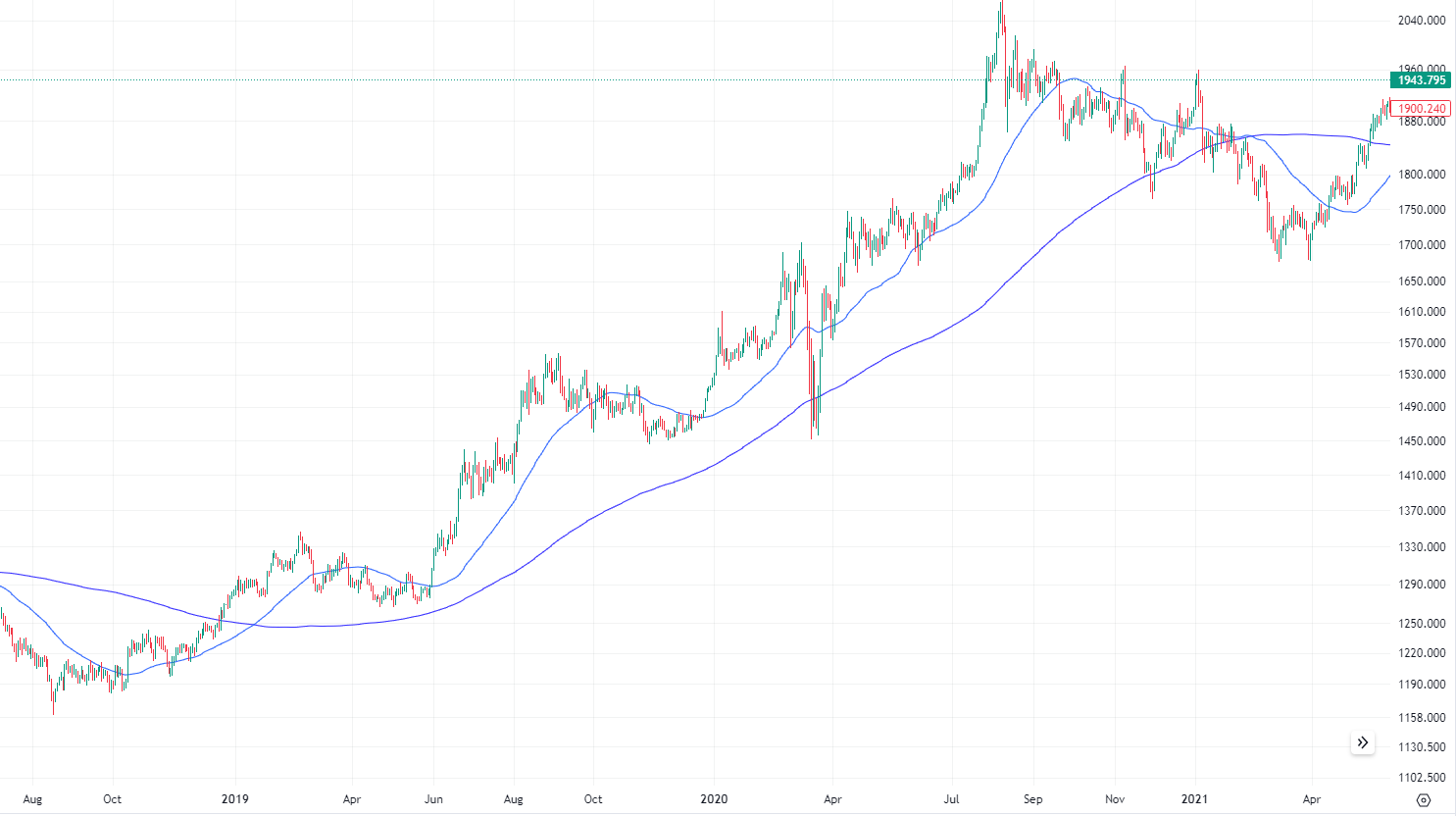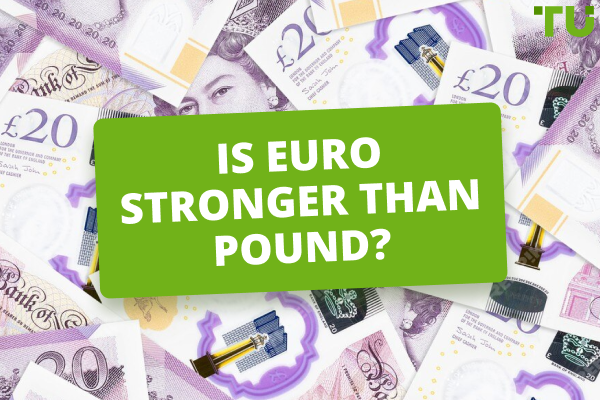The Basics of Forex Trade Setups
Forex trade setups define the conditions that must be met in the market before a trader enters a position. For example, with the ‘trend continuation’ trade setup, traders look for prices breaking through key resistance levels in an uptrend, or support levels in a downtrend, then enter the trade in the direction of that trend.
The concept of Forex trade setups is a fundamental component in the world of Forex trading. Forex trade setups are essentially the conditions that a trader looks for when deciding whether to enter a position in the market. They allow traders to engage in disciplined trading with a clearly defined structure.
In this article, Traders Union explores what trade setups are and how trade setups work, then explains the three basic trade setups that traders use. We’ll also look at how to find Forex trade setups and the advantages and disadvantages of using trade setups in general. The article looks to answer all readers’ questions regarding trade setups.
What are forex trade setups?
A trade setup is a prespecified set of conditions in the market that a trader can use to identify an opportunity to engage in a trade. What it basically means is the conditions or signals that traders seek out in the market before they trade. Forex trade setups help traders to identify potential entry and exit points, allowing them to effectively manage risk, and engage in informed decision making, all of which are crucial to successful trading.
These setups draw upon factors like technical and fundamental analysis, as well as trading signals. Traders rely on these setups to decide the optimal times and methods for entering or exiting a trade. The nature of trade setups can differ significantly, shaped by the trader's strategy and the specific currency pairs involved.
How do Forex trade setups work?
Imagine a trade setup like a blueprint, or a set of instructions. The trade setup, based on analysis, clearly defines a set of rules and criteria to guide the trader’s actions. A specific time frame is used for analysis, as chosen by the trader. They may opt for short-term timeframes such as 5-minute or 15-minute charts, or for extended positions might go for longer time frames such as 1-hour or daily charts, depending on their trading style.
Let’s look at an example using the ‘Golden Cross’ analysis technique. The Golden Cross is a bullish technical formation which supports upward momentum in a current trend. When the averages cross over each other, this signifies to the trader that the trend is building momentum, and he should enter a trade.

Source: Tradingview.com
What are the basic trade setups?
There are three basic trade setups that we’ll take a look at.
-
1
Trend Continuation: A trend continuation (this is often a ‘breakout’) trade setup involves identifying an existing trend and looking for opportunities to enter the trade in the direction of that trend. When the price breaks through a key resistance level in an uptrend, or support level in a downtrend, traders look to enter a trade
-
2
Trend Reversal: This trade setup focuses on spotting changes in market direction and entering a trade at the beginning of the new trend. Traders focus on any sign that the current trend is losing strength, and then enter the market during the early stages of the new trend. Note that trading against the trend is associated with a higher level of risk
-
3
Range-bound: A range-bound trade setup or ‘false breakout’, is suitable for sideways moving markets where prices fluctuate within a defined range. Trades try to identify key support and resistance levels. They then enter when the price appears to break out of the range but quickly reverses, indicating a false breakout
As you can see, the key to finding forex trading setsups is to determine the state of the market: either it is trending or is in a range.
How do I find forex setups?
Finding forex setups involves a combination of technical analysis, fundamental analysis, and an understanding of market dynamics. You can use these techniques and tools to look for forex trade setups:
-
Price Closing: Traders can identify key price levels of support or resistance. The support level is where a price regularly stops falling and bounces back up, unable to drop past a certain price. The resistance level is the point where a price repeatedly stops and dips back down and cannot break through. If the price breaks out and closes outside (above/below) of these key support and resistance levels, traders can enter a trade
-
Oscillator closing: Oscillators are chart indicators that traders can use to determine overbought and oversold levels. Oscillators such as RSI (Relative Strength Index) or Stochastic are analyzed, and if their readings close above or below certain levels, it may indicate potential price reversal points, signaling to the trader that they should trade
-
MA Crossover: Traders can use the moving average (MA) indicator to calculate the long-term averages of a market’s movements. They then look for crossovers between short-term and long-term moving averages. A bullish crossover (short-term crossing above long-term) suggests a potential uptrend, and vice versa. Traders enter a trade at these crossover points
-
Candlestick Analysis: Traders can use technical analysis by observing candlestick charts which display the highs, lows, open and closing of a security for a specific time period. Traders identify patterns such as engulfing, doji, or hammer candlestick patterns, which can provide insights into potential trend reversals, signifying a suitable time to enter a trade
-
Chart patterns: Traders may use chart patterns as a tool for recognizing patterns like triangles, or head and shoulder patterns. The patterns indicate possible breakout or breakdown points, telling a trader that they should trade
-
Fibonacci: Fibonacci retracement levels are horizontal lines which indicate support and resistance levels in price movements. Traders apply Fibonacci levels to identify potential retracement levels. Traders often look for reversals or continuations around these levels
-
Holistic Approach: Traders can use a combination of fundamental analysis and technical analysis, along with risk management strategies, to form a comprehensive trading plan. They can use tools like charts, indicators, and patterns to analyze historical price data and predict future price movements
Best Forex brokers


How do I start a trading setup?
Now you understand the different techniques and tools used by traders to create trade setups, let’s take a look at how you can start your own trade setup in five simple steps.
-
1
Formulate Setup: First, you need to define your strategy and clearly outline it. Specify the conditions or criteria that constitute your chosen trade setup. Identify the indicators, tools, or techniques you'll use to recognize the setup. For instance, it could involve trendlines, moving averages, or specific chart patterns
-
2
Study History: Back-test the efficiency of your chosen setup. Apply your setup criteria to historical market data to assess its performance. This involves manually or using software to simulate trades based on past conditions
-
3
Patience: Be patient and wait for the actual market conditions that align with your formulated set-up. Employ emotional discipline and avoid forcing trades in unfavorable conditions. When the identified conditions arise, make sure to confirm that they meet the pre-defined criteria. Ensure that all necessary elements of the setup are present
-
4
Extra Confirmation: Consider seeking confirmation from other timeframes or additional indicators. For example, if your primary set-up is on a daily chart, check for alignment on a shorter time frame like the hourly chart. This additional confirmation helps to reduce false signals and minimize risk
-
5
Enter Trade: Once the set-up conditions are met and confirmed, enter the trade according to your strategy. This involves placing a market stop-loss or limit stop-loss order to limit potential losses. Determine the level at which you would exit the trade if it moves against you. Establish a Take Profit level, indicating where you plan to exit the trade to secure profits. The stop-loss and take-profit orders you set should be based on your risk-reward ratio
See our Traders Union article providing a detailed seven step guide on trading plans.
👍 The pros of using trade setups
• Organization: Trade setups provide a systematic and organized approach to trading. They involve predefined rules and conditions that guide decision-making. This systematization can help traders maintain consistency, reduce ambiguity, and avoid haphazard trading
• Analysis: Trade setups create a structured framework for analyzing performance. Traders can assess the outcomes of executed setups, analyze winning and losing trades, and identify patterns of success or areas for improvement. This analytical approach fosters a continuous learning process
• Automation: Due to their clearly defined criteria, trade setups can be programmed into automated trading systems or Expert Advisors (EAs). This automation allows for precise execution of trades based on rules established by the trader, which minimizes human error and can lead to more efficient trading
• Versatility: The versatility of trade setups is a significant advantage. A well-defined setup can be utilized in various financial markets, such as Forex, stocks, or commodities. Furthermore, setups can be adapted to different timeframes, catering to the preferences and strategies of traders with varying trading styles
• Comprehensiveness: Some traders may find success by specializing in a single, highly effective setup. By mastering the intricacies of one setup, a trader can apply it consistently to continuously generate profits. This focused approach allows for in-depth understanding, improved decision-making, and the development of expertise in a specific strategy
• Discipline: Trade setups contribute to consistent decision-making. Traders stick to predefined rules and conditions, which reduces the influence of emotions in the decision-making process. This consistency enhances discipline - a crucial factor in long-term trading success
👎 The cons of using trade setups
• Low Frequency: Certain trade setups, particularly those based on specific criteria or market conditions, may occur infrequently. Traders who rely solely on these setups may be prone to periods of inactivity, leading to reduced trading opportunities and potential frustration during market lulls
• Subjectivity: Determining the quality of a trade setup is subjective, which can be a drawback. Different traders may interpret the same setup differently, leading to varied decisions. This subjectivity introduces an element of uncertainty and may result in inconsistent trading outcomes
• Self-limiting: Overemphasis on specific setups can lead to a narrow focus, potentially hindering a trader's overall development. Becoming a proficient trader involves mastering a range of skills, including risk management, market analysis, and adaptability. Tunnel vision on setups alone may limit a trader's growth and versatility
Getting started with your trading career can seem intimidating and at times overwhelming. Traders Union has written a detailed guide on how to get into Forex trading, to simplify things and guide you in getting started.
FAQs
What is the best setup for trading?
The best setup for trading depends on individual preferences and market conditions. It's subjective and depends on your strategy and the current market.
How do you make a good trading setup?
Craft a good trading setup by defining clear criteria, testing historical performance, and aligning it with your trading style.
Are trading setups necessary?
A trading setup is not necessary, but it provides structure and helps make informed decisions, both of which contribute to successful trading.
Are trade setups the same for different currency pairs?
Trade setups vary between currency pairs. While general principles apply, adapting setups to specific pairs enhances effectiveness.
Glossary for novice traders
-
1
Broker
A broker is a legal entity or individual that performs as an intermediary when making trades in the financial markets. Private investors cannot trade without a broker, since only brokers can execute trades on the exchanges.
-
2
Trading
Trading involves the act of buying and selling financial assets like stocks, currencies, or commodities with the intention of profiting from market price fluctuations. Traders employ various strategies, analysis techniques, and risk management practices to make informed decisions and optimize their chances of success in the financial markets.
-
3
Forex Trading
Forex trading, short for foreign exchange trading, is the practice of buying and selling currencies in the global foreign exchange market with the aim of profiting from fluctuations in exchange rates. Traders speculate on whether one currency will rise or fall in value relative to another currency and make trading decisions accordingly.
-
4
Fundamental Analysis
Fundamental analysis is a method or tool that investors use that seeks to determine the intrinsic value of a security by examining economic and financial factors. It considers macroeconomic factors such as the state of the economy and industry conditions.
-
5
Take-Profit
Take-Profit order is a type of trading order that instructs a broker to close a position once the market reaches a specified profit level.
Team that worked on the article
Jason Law is a freelance writer and journalist and a Traders Union website contributor. While his main areas of expertise are currently finance and investing, he’s also a generalist writer covering news, current events, and travel.
Jason’s experience includes being an editor for South24 News and writing for the Vietnam Times newspaper. He is also an avid investor and an active stock and cryptocurrency trader with several years of experience.
Dr. BJ Johnson is a PhD in English Language and an editor with over 15 years of experience. He earned his degree in English Language in the U.S and the UK. In 2020, Dr. Johnson joined the Traders Union team. Since then, he has created over 100 exclusive articles and edited over 300 articles of other authors.
Mirjan Hipolito is a journalist and news editor at Traders Union. She is an expert crypto writer with five years of experience in the financial markets. Her specialties are daily market news, price predictions, and Initial Coin Offerings (ICO).









